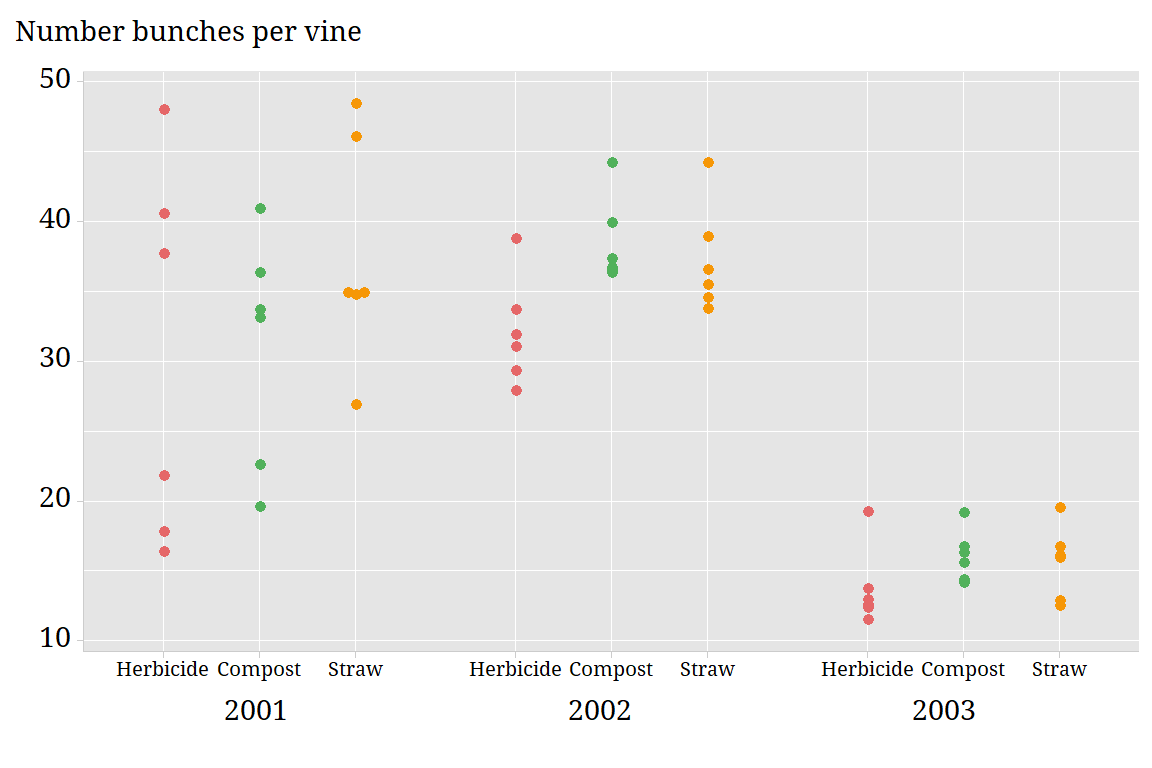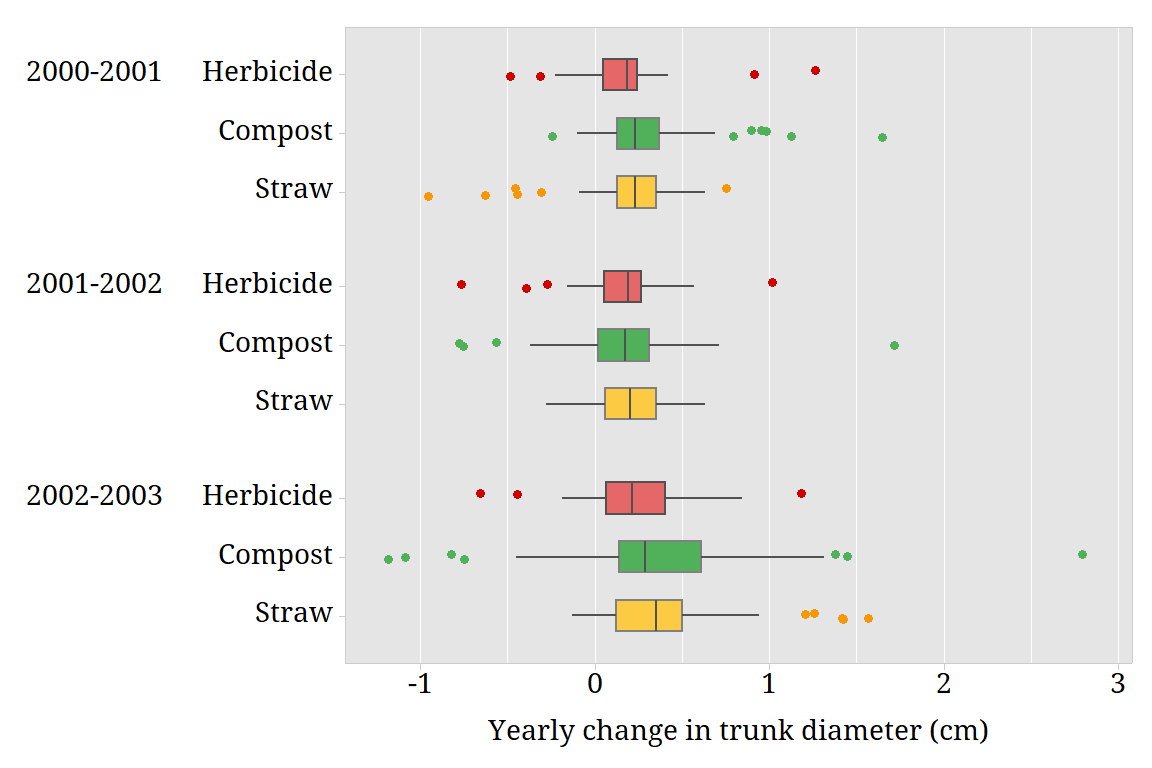Growing better pinot noir – Analysis
Summary
Click the play button to hear about how the results will be used. |
Vincent’s well-planned field study showed from some very strong effects from year to year. The number of bunches of grapes harvested and the yield per bunch were affected by the ongoing drought.

In 2002 sheep grazed the vineyard and ate most of the first bud burst! In that year, the number of bunches produced and grape yield depended on the undervine treatment. However the location of the vines also had some effect on productivity. In 2003 the productivity of the vines, as measured by the number of bunches produced, was not strongly effected by the under vine treatments.

Questions to consider

- Consider the way that grapevine growth is measured. Using the measurement with all the stages included, describe the type of measurement scale used and the kind of analysis that would be most appropriate for describing the distribution of growth stage.
- Again consider the way that grapevine growth is measured. If you use the Major stages only, what kind of analysis is most appropriate for describing the distribution of growth stage?
- Consider the study design. Write a short description of the design and explain any limitations you find. Propose an alternative design for the study.
- Vincent’s study was conducted during a drought. What effect do you think this has on his findings? What implications does it have for the inferences that he can make?
- Many of the variables in the data set are based on the average of the observations from nine vines. What are the implications of this averaging for the data analysis, and the inferences ?
- Examine the data collected on trunk diameter over four years. The figure below shows the yearly change in trunk diameter. Describe the changes evident in the boxplot. Do the results make “common sense”? Explain why or why not.
- Examine the figure showing yearly change in trunk diameter above. There are a number of unusual values in the data. What would you recommend doing with these unusual values? How would you justify your recommendation?
- Vincent had some practical problems in measuring the trunk diameter from year-to-year. You can hear about these problems on the Data collection page. Is there any evidence of such practical problems in the boxplots of yearly change in trunk diameter above? If there were practical problems in collecting these data, what recommendation would you make for the analysis? Explain why you made your preferred recommendation.
- In the Background, some standards for the levels of four different nutrients for ‘good leaf nutrition’ were described. Consider these standards and investigate if the petioles under each treatment had adequate nutrition (use results from either 2001 or 2002). Consider using (i) hypothesis testing and (ii) confidence intervals to investigating petiole nutrition. Would one approach be preferable? Explain why or why not.
- In the Background, some information about the levels of chloride, potassium and phosphorus in the soil, and the pH of calcium chloride in the soil was provided. Reasonable values for the ratio of calcuim to magnesium were described. For a given year, investigate how the soil under the different treatments compares. Display the results of your analysis graphically, and include information about ideal or toxic levels of the soil characteristic when they are available.
- Investigate the claim that applying mulch under vines can delay growth – in particular bud burst.
- Consider the soil analysis and the soluble nutrients in the water in the soil. Produce a visual representation characterising the relationships between the levels of the four nutrients.
- Consider each of the measures of the productivity of the wines in 2001. Investigate the effects of the undervine treatment on productivity. Consider what kind of contrasts you might make among the three treatments.
- Consider the juice analysis in any particular year. Investigate if organic under vine treatments differ from herbicide in their effect on characteristics of the juice.